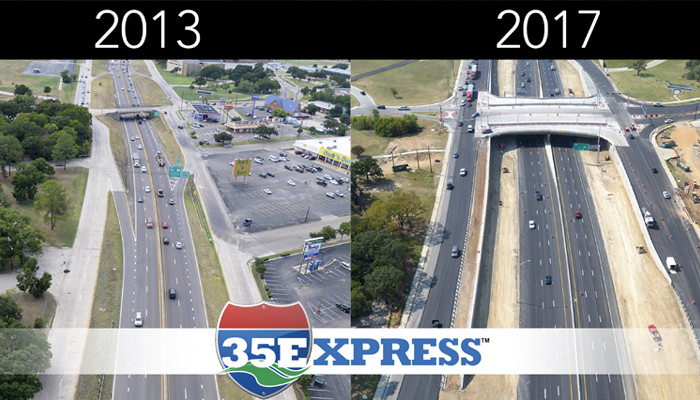Infrastructure development, particularly transportation, requires unique public engagement skills and expertise. The technical complexity and formidable logistical demands of such projects makes providing clear and understandable information to the stakeholders a challenge. Still, the key to success is the same as with any other communications and marketing effort; building strong relationships.
Over the past four years, OCG+ has handled communications for the $1.4 billion 35Express project in North Texas. The sheer scale of the project – approximately 30 miles of Interstate 35E between Dallas and Denton – demanded a strong public engagement effort. With nine cities and two counties along the construction corridor, meeting the information needs of the stakeholders required careful planning and research.
Here are four lessons we have learned from this exciting project.
1. Invest time to fully understand the project
By its very nature, infrastructure projects have complicated, and unique communications needs. The key to handling these challenges is taking the time to understand the details of the work being completed and its effects within communities. While stakeholders will only require a fraction of this information, having the background knowledge allows the public information team to act proactively and with greater accuracy.
A strong understanding of the project allows more timely responses to stakeholder concerns. Familiarity with upcoming work enhances the ability to identify the client’s communications needs. It also helps reduce the chance of conveying incorrect information to the stakeholders.
2. Cater communications strategies to connect with different audiences
Communications success can be created by determining what tools are needed to reach the given stakeholder audience and their specific needs. Taking the time to develop a strong grasp on who the stakeholders are at each level provides valuable insight into the best way to connect effectively with them.
For example, social media and a strong digital presence proved effective for reaching drivers seeking information about daily mobility. More traditional outreach, such as public meetings and presentations, helped provide local residents and business owners with information about construction schedules and local impacts.
3. Facilitate finding solutions for stakeholders
Providing requested information in accurate and timely manner remains the best way to build strong relationships with stakeholders. This ranges from general updates on construction activity to the specific concerns of various individual stakeholders. Consistency in response across the board.
It’s critical to evaluate the individual stakeholder issues, identify the key problem needing to be addressed and providing the project team a concise assessment of what needs to be done. Handling these matters in a timely way builds trust with stakeholders and allows the client to deal with the issue in the most efficient manner possible.
4. Work to enhance the client’s internal communications
Major infrastructure projects require multiple large teams who focus on specific tasks as effort requires. Design, quality control, construction, traffic maintenance and a host of others work in tandem each and every day. Although working somewhat autonomously may bolster productivity, it can be a limitation for organizational communications. Left unchecked, this situation can create complications that lead to the type of miscommunications that frustrate stakeholders.
While communications with stakeholders holds paramount importance, there is great value to enabling the client’s communications internally. Investing the time to know the project teams and how they perform each of their roles can reap real rewards down the line.
C.J. Schexnayder | Director of Public Engagement

